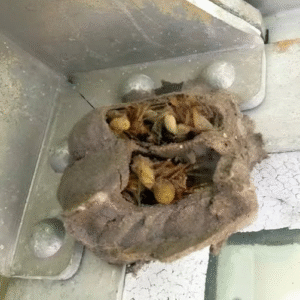“Tiny droppings revealed a miracle no one expected.” Conservationists in Australia just discovered newborns from a species once thought gone forever ???????? See the first baby quolls in the article ????
In an exciting development for conservationists, researchers at Mt Gibson Wildlife Sanctuary in Western Australia recently stumbled upon a remarkable sign of life—tiny droppings left behind by newborn creatures.
But these aren’t just any animals. They belong to the western quoll, a rare carnivorous marsupial that once roamed widely across the Australian continent. Following European colonization, the species faced rapid decline due to habitat loss and predators such as foxes and cats.
Today, western quolls—also known by their Indigenous name, “chuditch”—are found only in small numbers in parts of southwestern Australia. About the size of a domestic cat, these agile hunters play a key role in maintaining ecological balance by preying on insects, reptiles, and small birds.

Over the past several months, a dedicated team of ecologists has been working to reintroduce the species to Mt Gibson, a sanctuary where quolls had previously vanished. Their hard work seems to be paying off.
The discovery of the first baby quolls marks a major milestone. It’s a hopeful indication that these elusive marsupials are not only surviving, but thriving in their restored habitat.
“Our tracking and camera footage show strong signs that the quolls are adapting well,” said Georgina Anderson, a senior field ecologist with the Australian Wildlife Conservancy. “Finding pouch young confirms successful breeding, which is exactly what we were hoping for.”
One standout quoll, nicknamed Aang, has become somewhat of a local celebrity. “He’s frequently spotted on our monitoring cameras and has a big personality. He’s been known to raid multiple bait stations in a single night to collect chicken treats,” Anderson added with a smile.

This small but powerful progress is a breath of fresh air for conservation in Australia. And with continued care, it may just be the beginning of a long-awaited recovery for the western quoll.





